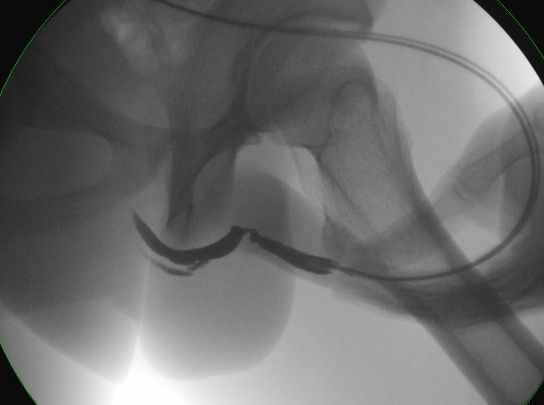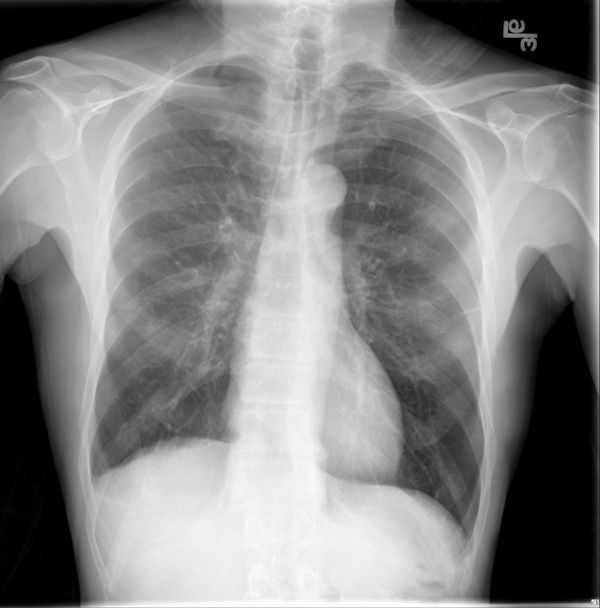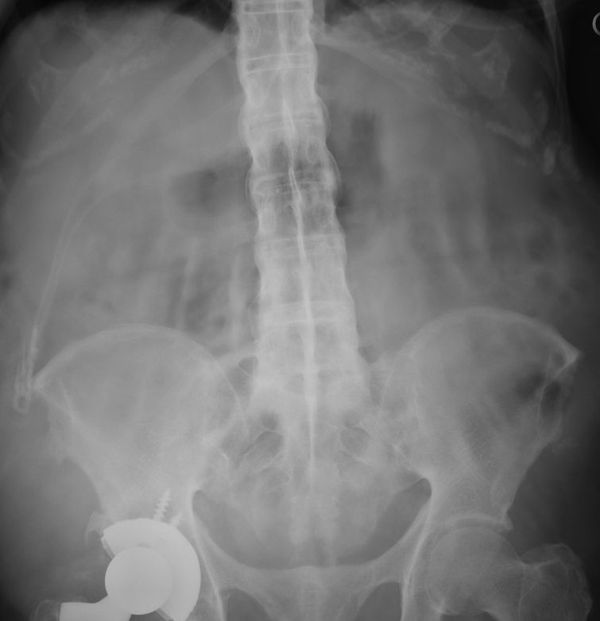Season 10 Case 9
What is going on here? And is it normal or abnormal?
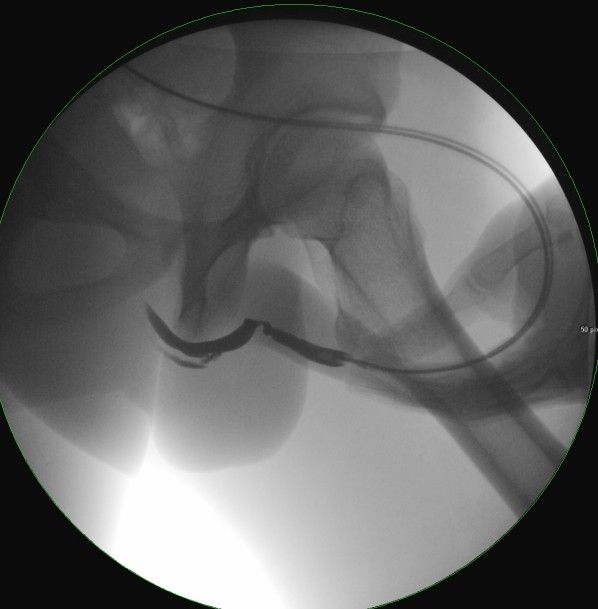
History: skateboard injury to perineum
Answer:
CLICK HERE FOR ANSWER
Answer: Retrograde Urethrogram (RUG) with injury to the bulbous urethra
First we should go a bit into the anatomy of the urethra
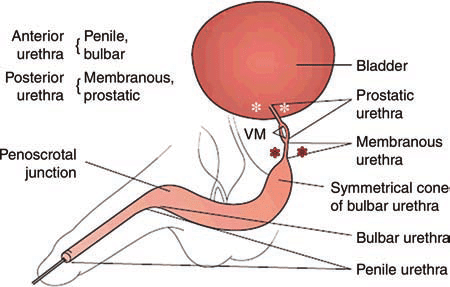
We are focusing on male anatomy because female urethral anatomy is much less complex and much less commonly injured
Anatomy:
There are 4 major parts of the male urethra:
Posterior Urethra
- Prostatic urethra (obviously portion within the prostate)
- Membranous urethra (portion below the prostate extending to the urogenital diaphragm)
Anterior Urethra
3. Bulbous (bulbar) urethra (U-G diaphragm to base of penis)
4. Penile urethra
Mechanism of Injury
Most common injury is from pelvic fractures yielding injury to the posterior urethra. This can be associated with bladder injury.
Straddle injuries are the next most common and tend to yield direct trauma to the perineum and anterior urethra, often compressing it against the pubis.
Clinically look for:
- Hematuria
- Blood at the urethral meatus
- evidence of trauma - swelling/bruising/hematoma
- inability to void
Procedure Technique (Retrograde urethrography)
This is not a very common procedure for Radiologists these days. The premise is simple, fill the urethra up with contrast, but it can be a bit tricky. Here are some tips:
- Positioning is key - have the patient roll ~30degrees towards you and gently lengthen out the urethra as much as possible
- minimally lubricate the catheter and insert it ~2-3cm into the urethral meatus. There is a small outpouching just proximal to the meatus called the fossa navicularis, which is ideal position of the catether tip
- Personally, I forgo clamps and insulflation of Foley bulb and just have the patient use his fingers to effectively clamp the Foley just proximal to the meatus (warning - too much lubrication can cause the catheter to squeeze out during injection. If you let the patient know this they can be your best friend by squeezing as tight as the can tolerate. And that way you don't have to re-insert and get it done ASAP.)
- Inject your water soluble contrast retrograde to fill the penile and bulbous urethra. It can take a bit of pressure with injection to get contrast beyond the U-G diaphragm, but often you can get it retrograde all the way into the bladder (again with a helpful patient to prevent backpressure forcing the catheter out).
In a trauma situation, you can either do a RUG or an antegrade urethrogram (essentially image urination after contrast is installed in the urinary bladder. This can often visualize the posterior urethra much easier assuming the patient is able to perform such a procedure.
Grading Systems
There are 2 grading systems for urethral injuries:
AAST injury scale
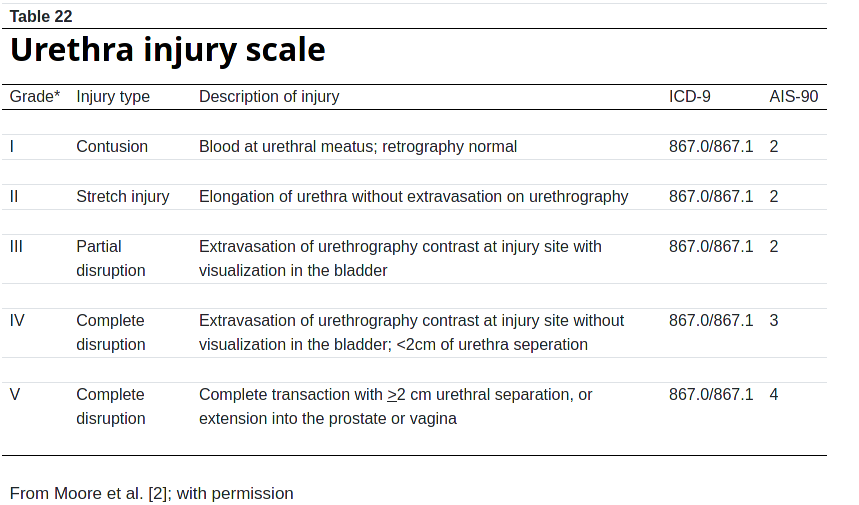
Goldman classification

Our Case
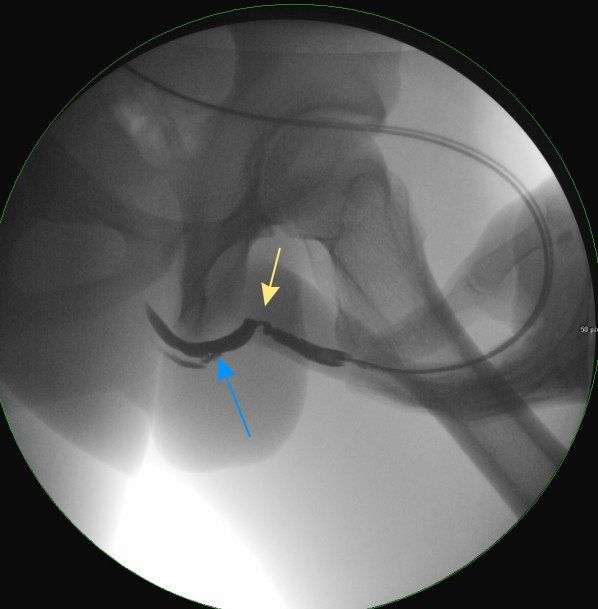
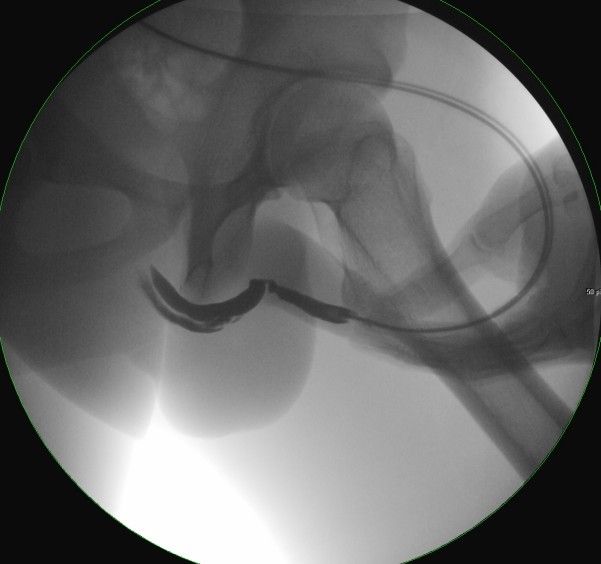
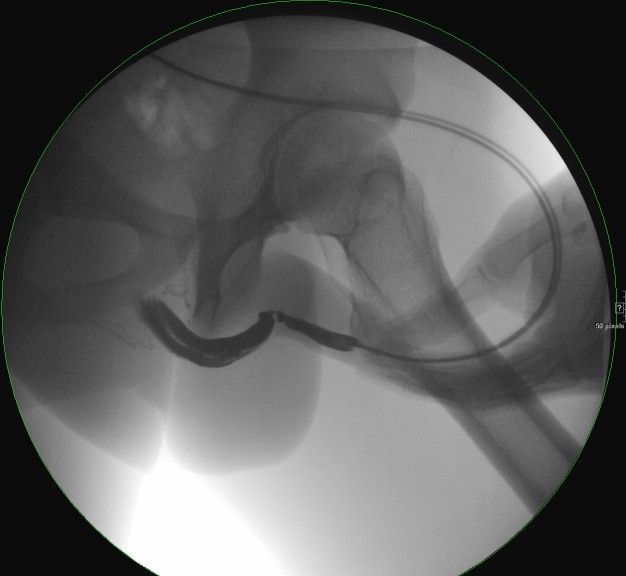
In our case, this individual was skateboarding and had an unfortunate straddle injury landing on his skateboard. He had pain and blood at the meatus.
The blue arrow above shows extravastion from the bulbous urethra consistent with a Goldman Class 5 injury if you want to classify it. Much of the AAST and Goldman are focused on posterior urethral injuries which we don't have here. The brisk extravasation limited the ability to get contrast past the U-G diaphragm but we were more focued on an anterior injury anyway given the history and symptoms.
The yellow arrow is the penoscrotal junction, where the suspensory ligament attaches. You can commonly see narrowing here dependent on positioning of the penis (also likely exaggerated by foreshortening of the penile urethra due to positioning). This should distend well with good positioning and a good injection.
There are several non-traumatic reasons for performance of urethrography including:
- stricture (eg post-infectious, prior instrumentation, prior trauma, etc)
- diverticulum
- urethral tumors
- fistuals
- foreign bodies
Reference:
Excellent Radiographics article on urethral injuries as previously mentioned:
Ingram MD, Watson SG, Skippage PL, Patel U. Urethral injuries after pelvic trauma: evaluation with urethrography. Radiographics. 2008 Oct;28(6):1631-43. doi: 10.1148/rg.286085501. PMID: 18936026. https://doi.org/10.1148/rg.286085501

